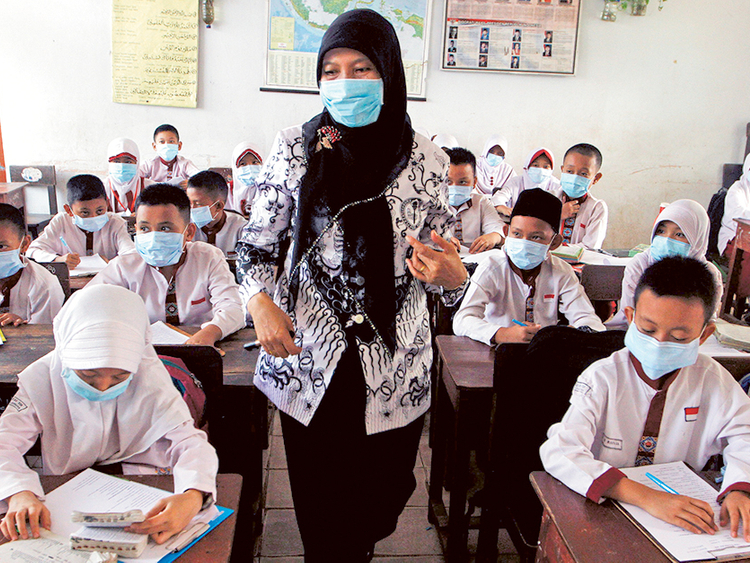DUBAI: A quarter of all global deaths of children under five are due to unhealthy or polluted environments including dirty water and air, second-hand smoke and a lack or adequate hygiene, the World Health Organisation (WHO) said on Monday.
Such unsanitary and polluted environments can lead to fatal cases of diarrhoea, malaria and pneumonia, the WHO said in a report, and kill 1.7 million children a year.
“A polluted environment is a deadly one — particularly for young children,” WHO Director-General Margaret Chan said in a statement. “Their developing organs and immune systems, and smaller bodies and airways, make them especially vulnerable to dirty air and water.”
In the report — “Inheriting a sustainable world: Atlas on children’s health and the environment” — the WHO said harmful exposure can start in the womb, and then continue if infants and toddlers are exposed to indoor and outdoor air pollution and second-hand smoke.
This increases their childhood risk of pneumonia as well as their lifelong risk of chronic respiratory diseases such as asthma. Air pollution also increases the lifelong risk of heart disease, stroke and cancer, the report said.
The report also noted that in households without access to safe water and sanitation, or that are polluted with smoke from unclean fuels such as coal or dung for cooking and heating, children are at higher risk of diarrhoea and pneumonia.
Children are also exposed to harmful chemicals through food, water, air and products around them, it said.
Maria Neira, a WHO expert on public health, said this was a heavy toll, both in terms of deaths and long-term illness and disease rates. She urged governments to do more to make all places safe for children.
“Investing in the removal of environmental risks to health, such as improving water quality or using cleaner fuels, will result in massive health benefits,” she said.
But it’s not just the young who are vulnerable, and tiny particles of pollution have been discovered inside samples of brain tissue, according to new research.
Suspected of toxicity, the particles of iron oxide could conceivably contribute to diseases like Alzheimer’s — though evidence for this is lacking.
Many studies have focused on the impact of dirty air on the lungs and heart.
Now this new research provides the first evidence that minute particles of what is called magnetite, which can be derived from pollution, can find their way into the brain.
Earlier this year, WHO warned that air pollution was leading to as many as three million premature deaths every year.
That research was led by scientists at Lancaster University in the UK. Further study revealed that the particles have a distinctive shape which provides a crucial clue to their origin.
Magnetite can occur naturally in the brain in tiny quantities but the particles formed that way are distinctively jagged.
By contrast, the particles found in the study were not only far more numerous but also smooth and rounded — characteristics that can only be created in the high temperatures of a vehicle engine or braking systems.
Prof Maher said: “They are spherical shapes and they have little crystallites around their surfaces, and they occur with other metals like platinum which comes from catalytic converters.
The highest level was found in a 32-year-old Mexican man who had been killed in a traffic accident.
Dubbed “nanospheres”, the particles are less than 200 nanometres in diameter — by comparison, a human hair is at least 50,000 nanometres thick.
While large particles of pollution such as soot can be trapped inside the nose, smaller types can enter the lungs and even smaller ones can cross into the bloodstream.














